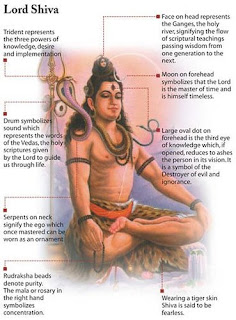Happy Onam
Onam or Thiruonam
originated as a joyous annual reminiscence of the golden rule of King Mahabali,
a mythical king, who ruled Kerala a very long time ago. It recalls the
sacrifice of the great king, his true devotion to God, his human pride and his
ultimate redemption. Onam welcomes the spirit of a great king, and assures him
that his people are happy and wish him well.
This year on 29 August 2012 marks some
high-spirited celebrations down south. People in the southern Indian coastal
state of Kerala go crazy over the state festival of Onam, with ten days of
feasting, boat races, song, dance and merriment. Onam is a traditional ten day harvest festival that marks
the homecoming of the mythical King Mahabali. It’s a festival rich in culture
and heritage.
There are actually four days of Onam.
First on August 28, the day before Thiru Onam, while fourth Onam
will be on August 31. Onam festivities continue throughout these days.
Where
is Onam Celebrated:
Onam
is celebrated in the state of Kerala, in southern India. It's the biggest
festival of the year there. The most spectacular celebrations take place in
Kochin, Trivandrum, Thrissur, and Kottayam.
Onam
is celebrated in the beginning of the month of Chingam, the first month of
Malayalam Calendar (Kollavarsham). In 2012, the most important day of
Onam (known as Thiru Onam) is on August 29. Rituals commence 10 days
before Thiru Onam, on Atham.
The Custom
A flower carpet called 'Pookalam' is laid in front of every house to welcome the advent of the vanquished king, and earthen mounds representing Mahabali and Vishnu are placed in the dung-plastered courtyards. Traditional rituals are performed followed by a lavish feast called 'Sadhya'. Onam also means new clothes for the whole family, sumptuous home-cooked delicacies on plantain leaf and the lingering aroma of the sweet Payasam.
On Atham (10 days before Onam), people start the day with an early bath, perform prayers, and start creating their floral decorations on the ground in front of their houses. The floral decorations (pookalams) continue during the 10 day lead up to Onam, and pookalam competitions are organized by various organizations.
The Spectacle
Spectacular parades of caparisoned elephants, fireworks and the famous Kathakali dance are traditionally associated with Onam. It's also the season of many cultural and sport events and carnivals. All this makes Onam-time a perfect period to visit this coastal state, touted as "Gods Own Country".
The Grand Boat Race
One of the main attractions of Onam, is the 'Vallamkali' or boat races of Karuvatta, Payippad, Aranmula and Kottayam. Hundreds of oarsmen row traditional boats to the rhythm of drums and cymbals. These long graceful Snake Boats called 'Chundans' are named after their exceedingly long hulls and high sterns that resemble the raised hood of a cobra.
Then there are 'Odis', the small and swift raiding crafts adorned with gold tasseled silk umbrellas, the 'Churulans' with their elaborately curled prows and sterns, and the 'Veppus', a kind of cook-boat. This traditional village rivalry on watercrafts reminds one of ancient naval warfare.
Thousands throng the banks to cheer and watch the breathtaking show of muscle power, rowing skills and rapid rhythm. These boats - all pitted against their own kind - rip through the backwaters of Kerala in a tussle of speed.
Onam is For All
Although this festival has its origin in Hindu mythology, Onam is for all people of all class and creed. Hindus, Muslims and Christians, the wealthy and the downtrodden, all celebrate Onam with equal fervor. The secular character of Onam is peculiar to this land where unity had always coexisted with diversity, especially during festivals, when people come together to celebrate life's unlimited joys.
The Story of King Mahabali
The Vamana asked for a simple gift —
three paces of land — and the king agreed to it. Vishnu in the guise of Vamana
then increased his stature and with the first step covered the sky, blotting
out the stars, and with the second, straddled the netherworld. Realising that
Vamana's third step will destroy the earth, Mahabali offered his head as the
last step.
Vishnu's fatal third step pushed him to
the netherworld, but before banishing him to the underworld Vishnu granted him
a boon. Since he was attached to his kingdom and his people, he was allowed to
return once a year from exile. Onam is the celebration that marks the
homecoming of King Mahabali. It is the day when a grateful Kerala pays a
glorious tribute to the memory of this benign king who gave his all for his
subjects.
Another
Story of King Mahabali & Vamana
Another legend has it that King Mahabali was a devout
worshipper of Lord Vishnu. He was sincere, honest, just and a good ruler. But
he had one weakness — ego. And to eradicate his pride and redeem his beloved
devotee of this one sin, Vishnu came to earth in the form of a dwarf Brahmin
named Vamana.
The king in his pride asked the Brahmin
what he wanted for he could give anything. Vamana asked for three paces of land
and the king agreed. To humble him Vishnu, as Vamana showed Mahabali that he is
just a puny creature in front of God's universal stature.
Mahabali, who was a man of principles,
realized God's purpose and offered his head for Vamana's footstep, as he was
sent to another world. This fatal step proved a blessing in disguise for the
good king — the foot salvaged and released him from the recurrent cycle of
birth and death. That is why Onam is celebrated by wearing new clothes and
resolving to lead a new life of truth, piety, love, and humility.















Comments
Post a Comment